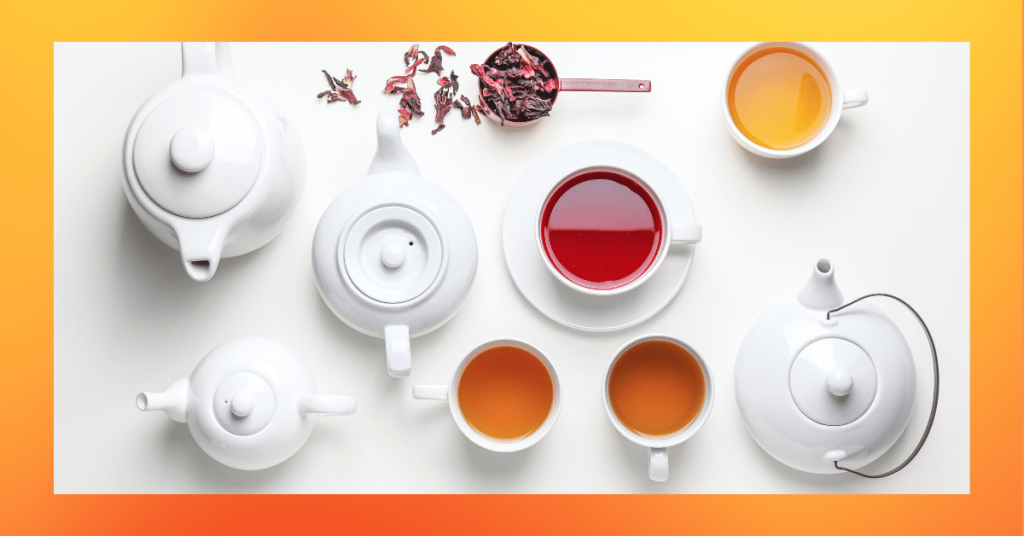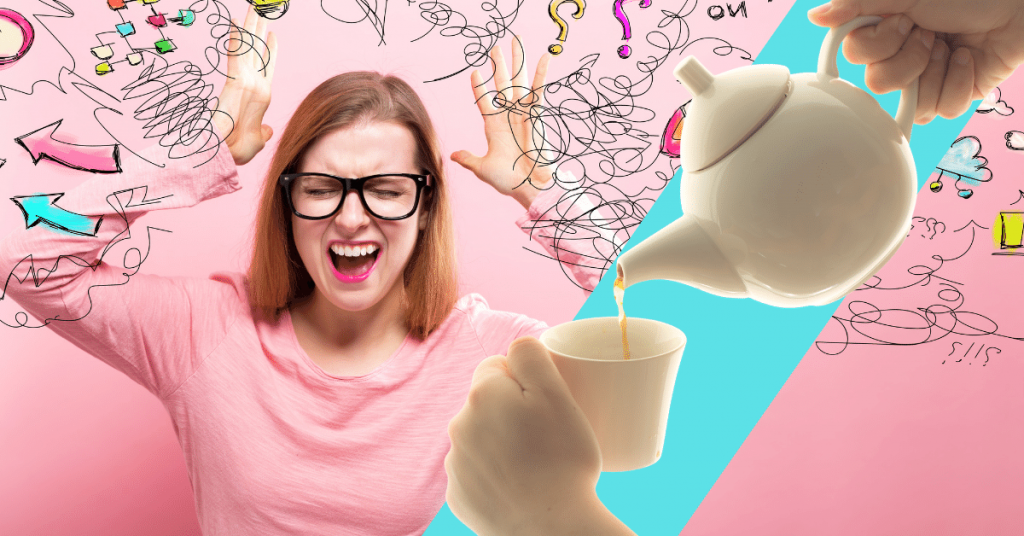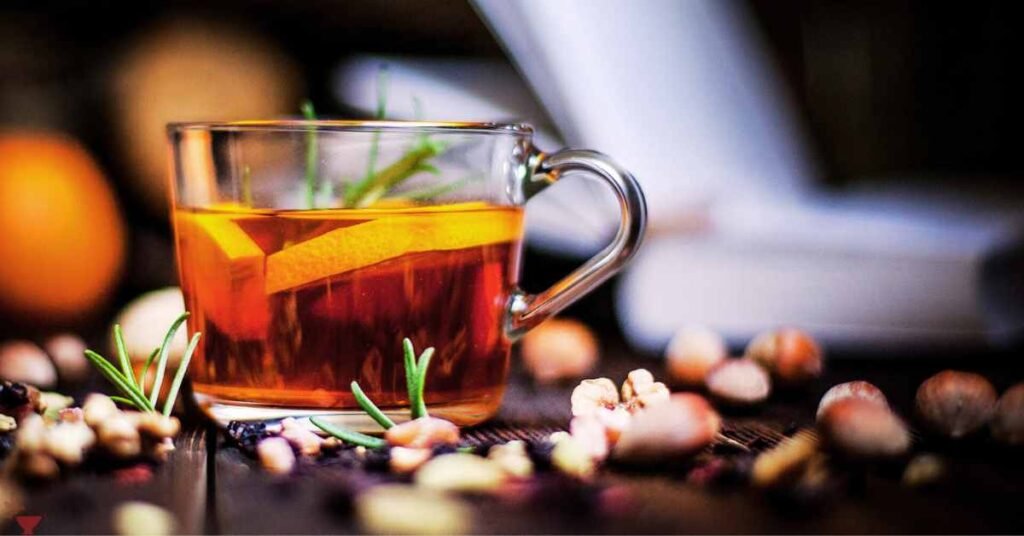How would you like to take a journey through a world of beautiful and delicate utensils that serve as a bridge to various cultures and one’s inner self? In looking past the exterior of pieces that retain our tea, we find the unexpected!
What Is Teaware?
Teaware consists of those items needed to brew and drink tea. “Teaware” is a term used to describe a teapot, teacup, and tea brewing accessories as a whole.
We have broken down what “teaware” includes, what each item is used for, what it’s made of, and regions in the world where its use is most prominent. In some countries, the manner in which tea is brewed and served in particular teaware pieces is highly symbolic or considered sacred.
While some cultures view brewing tea nothing more than the act of making a beverage, others take the time to embrace a sense of gratitude for the provisions nature has brought forth. Ceremonial tea elevates one’s overall wellbeing causing those present to look deeply within themselves and find that reconnection that busy lives seem to rob one of.
As we open the doors to the world of teaware, we invite you to think about how each piece has an independent role in tea brewing while being a part of a bigger picture of the art of tea. Tea time is about intentional movements that include everything from pouring hot water into a teapot to holding a teacup and feeling that first sip as it touches your lips.
The Teapot
What is the purpose of a teapot? The teapot is perhaps the centerpiece of teaware. It stands to reason that this piece has such notoriety in a tea set because it has the most important role in brewing tea.
Knowing which teapot is best for certain types of teas helps to make the perfect brew. Another important part of brewing tea is knowing how to use a teapot. So, let’s break down the teapot!
A Teapot’s Anatomy
Almost all teapots have the same anatomy. The exception would be teapots used in other countries. These various teapots feature differences in anatomy. Some have handles on the side, top, or don’t have one at all!
Parts Of A Teapot
(from top to bottom)
- Knob (or finial)
- Lid (or cover)
- Shoulders
- Body
- Spout
- Thumbpiece
- Handle
- Base (or foot)

Types Of Teapots Used In Different Countries
The beauty of teapots is they come in different sizes, colors, materials used to make them, and sometimes structure. Different countries have special teapots used to brew tea. While English teaware has a more charming, romantic appeal, Asian teaware reflects modesty, simplicity and is typically small.
Chinese
So, what are Chinese teapots? The tea culture in China places a strong focus on a dignified intentional state of self-discipline and reflection when having tea. Although tea serves as a social conduit among people, tea time has an element of sanctity. Because of this, the Chinese carefully choose their teapot, which outlasts its owner and is handed down to family members.
The most common type of teapot used in China is the “yixing” teapot. This teapot is made from plum-colored clay unique to a town (yixing) in the Jiangnan Province of China. It is taboo to brew more than one type of tea in a yixing teapot. The Chinese may have several yixings, one designated for each type of tea they drink. The porous clay tends to permanently retain a tea’s flavor, oils, and more. Over time, the teapot actually enhances the overall taste of a tea (providing no other type of tea has been made in the yixing.)
The most common teas consumed in China are Dragonwell, Sencha, Pu-erh, and Yunnan.
Although the Yixing graces the homes of most Chinese, it’s not uncommon for tea to be made in other styles of teapots such as bamboo teaware, porcelain teaware, and beautiful rustic, pottery teapots made by hand.

Japanese
What is a kyusu teapot? Kyusu is the name for “teapot” in Japan. There are a few basic kyusu teapots the Japanese commonly use, which include Yokode, Uwade, Ushirode, Tsetubin, Hohin, and Shiboridashi.
- Yokode: A small teapot with a handle that juts out sideways.
- Uwade: A medium teapot with the handle above the teapot.
- Ushirode: A medium teapot with the traditional style we know with the handle on the body.
- Tsetubin: A small flat-looking cast iron teapot with a handle above the teapot.
- Hohin: A miniature teapot (no handle) that is cupped in the hand.
- Shiboridashi: A flattened bowl-like teapot with a subtle spouted shape.
The most common teas consumed in Japan are Matcha, Hojicha, Sencha, and Genmaicha.
Russian
In Russia, the tea culture typically uses either a samovar or a porcelain teapot. Samovars are a prized possession in homes throughout Russia. Traditional samovars have a large stove-like bottom where coals are inserted to heat an interior bladder full of water. A spigot dispenses the hot water into teacups partially filled with concentrated coffee kept in a teapot that sits over a chimney-type opening. The tea in the teapot is heated from the hot water below in the bladder.
The most common tea consumed in Russia is black tea with lemon.
Today, many Russians opt for a more modern electric version that isn’t as ornate. An interesting feature samovars have is hooks on each side of the body of the stove structure where a string of Sushkas or Baranski (a pastry that looks like a bagel) are strung across the belly of the samovar. The heat from the hot water heated the pastries.
Should a Russian tea drinker choose to brew tea in a porcelain teapot, there are almost always decorative cobalt blue and gold designs on the exterior. Cobalt blue seems to be a traditional teaware color that adds a noble element to a teapot.
Turkish
Turkish teapots are perhaps the most adorned we have seen. It’s not uncommon for one of these teapots to be gilded with gold or fine gems and stones. There’s no mistaking a Turkish teapot because they are tall, slender towards the top, and have a long, curved spout. The handle is as elongated as the spout.
They also use a double teapot called “caydanlik.” It looks like two teapots stacked on top of one another (the bottom is slightly larger.) A caydanlik is very ornate and often made of copper. This bottom teapot is where the hot water is kept, and the one on top is where a condensed tea is kept. This setup is similar to the samovar.
The most common tea consumed in Turkey is black tea.
English
English teaware is some of the most commonly used here in the U.S. and throughout Europe. A teapot set is something that becomes an heirloom or is gifted for those special occasions such as weddings. In the U.K., it’s rare to find a home without a teapot set as tea is a staple for most everyone there. English teapots are larger compared to Chinese and Japanese teapots.
The most common tea consumed in the U.K. is English Breakfast, Earl Grey, Irish Breakfast, and Black tea.

What Are Teapots Made Of?
As you can see, different countries and cultures use teapots made of glass, ceramic, porcelain, pottery, and cast iron.
Glass
A clear glass teapot is best to enjoy blooming tea brewing. The tea inside opens up into a beautiful blossom.
Ceramic/Porcelain
Many of the English teapots are either ceramic or porcelain. We get a very common question about what is the difference between porcelain and ceramic teapots. Ceramic and porcelain are made from the same material; however, a ceramic teapot is thicker, whereas a porcelain teapot is thin, making it very delicate. By being extremely fragile, more tea drinkers tend to consider this type of teapot “posh.”
Pottery
Teapots made from clay, such as the Chinese yixing or the Japanese kyusu, are considered pottery. Some may even refer to this type of material as stoneware.
Metal
Russian samovars are almost always made with a metallic material such as silver, gold, copper, or stainless steel. Some traditional teapots, such as English teapots or electric kettles, may be made from stainless steel.
Cast Iron
The cast iron teapot is typically a material found in the Chinese tetsubin teapot. It’s not often you’ll find other teapots made from cast iron.
The Teacup
The teacup is the vessel from which you drink your tea. Many people assume that a teacup, coffee cup, or mug are all the same. Tea connoisseurs beg to differ when it comes to the assumption that these vessels are the same thing. Some will tell you that tea is meant to be served in a teacup, and coffee cups and mugs should be reserved for coffee or hot cocoa.
So, in the real world, what are the differences that set teacups apart from other hot beverage cups and mugs? This is a difficult question to answer because the various teacup makers worldwide have their own unique standards when it comes to the names of shapes and names. Some refer to their teacups as “mugs,” while others refer to them as “bowls.”
We can tell you that most teacups are intended to be delicate, have a wide top and a narrow base/foot, and a handle that is as dainty as the teacup. These teacups almost always have a saucer positioned below them when consuming tea. The Asian cultures drink tea in bowl-like teacups that don’t have handles. Turkish teacups are tulip-shaped and usually have a metal cup holder with a handle to prevent touching the thin, hot teacup.
Tea Accessories
There are a few accessories that are essential to brewing and drinking tea. Depending on what country you live in, you may use an English tea strainer that sits on the cup, or for those in the U.S., a drop-in tea infuser serves the same purpose (to keep particles of tea from the teacup during brewing.) When using loose-leaf tea, having a teapot with a built-in strainer or using a teacup strainer or drop-in infuser makes your tea drinking experience much more enjoyable.
Another accessory to have in your teaware arsenal is a kettle to heat your water. Electric kettles allow you to control the temperature and are convenient to use. But there are some die-hard tea drinkers who prefer the whistle of a traditional stovetop kettle when making tea.
Properly Brewing With Your Teaware
Because there are so many different types of teaware, for the sake of making things easier, we will show you how to brew tea with English teaware since most of us are familiar with one.
Things You’ll Need
- Teapot
- Teacup
- Tea Strainer or Drop-In Infuser
- 3 Teaspoons of Loose Leaf Assam Tea
- Kettle
- 2 ½ Cups of Water
Let’s Get Brewing!
Did you know that using bottled or filtered water to make tea makes a world of difference in the overall taste of brewed tea?
- Pour 2 cups of water into a kettle.
- Bring your water to a boil and remove from the heat. If you have an electric kettle, heat the water to about 185 degrees (F) (85 degrees C.)
- Pour a tiny bit of hot water into your teapot and swirl around to warm your teapot. Do the same thing for your teacup. By bathing your teaware in warm water, your tea tends to stay hot longer.
- There are two ways to steep your tea:
- Place the loose leaf tea into a drop-in tea infuser. Drop the infuser into the teapot. Place the cover back onto the teapot and steep for 3 minutes.
OR
- Place the loose leaf tea directly into the teapot. Place the cover back onto the teapot and steep for 3 minutes. (If you opt for this method, you’ll need a teacup strainer to pour the tea through.)
5. Once steeping is done, pour the tea into the teacup and enjoy.
Be sure to thoroughly clean your teapot (warm water and dish soap) after each use. If not, different teas leave a residue that may affect the taste of your next brew. If you happen to have an unglazed teapot such as a kyusu or yixing, washing one in dishwater isn’t recommended. It’s best to follow the cleaning recommendations of the teapot manufacturer.
Teaware Deciphered
Hopefully, we have pulled back the curtain enough to help you have a better understanding of what teaware is. Whether you have inherited antique teaware or have purchased a sparkling new tea set, trust us, you will come to cherish it.
We invite you to take a journey with different teas from around the world. Think of your teapot or teacup as a door to new experiences!
MEDICAL DISCLAIMER
Itsnevernotteatime.com cannot and does not contain medical/health advice. The medical/health information is provided for general and educational purposes only and is not a substitute for professional advice.




